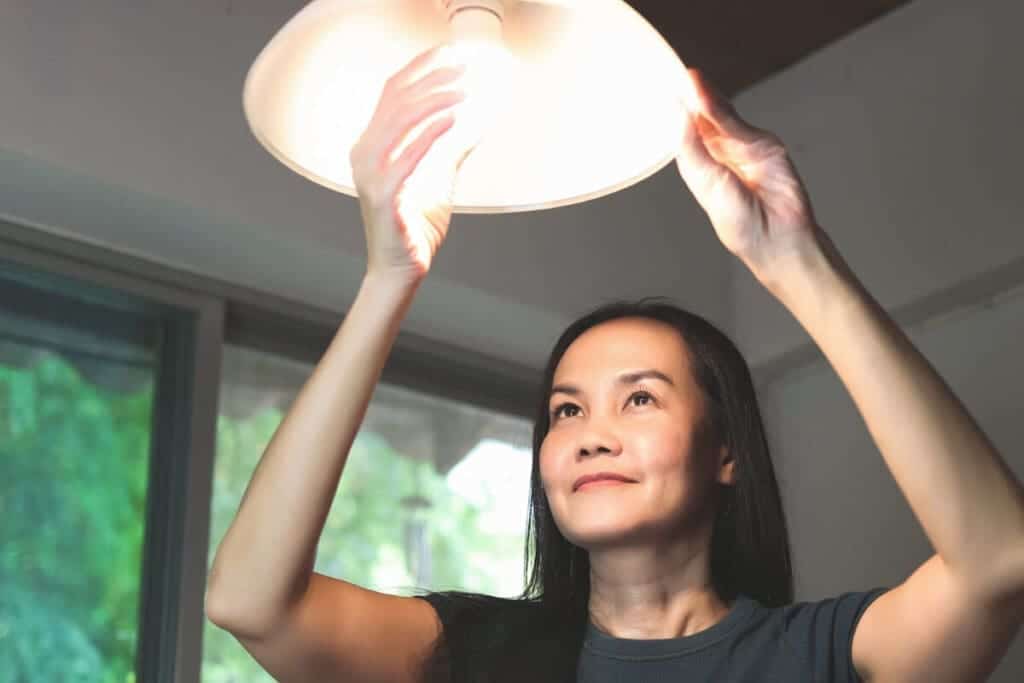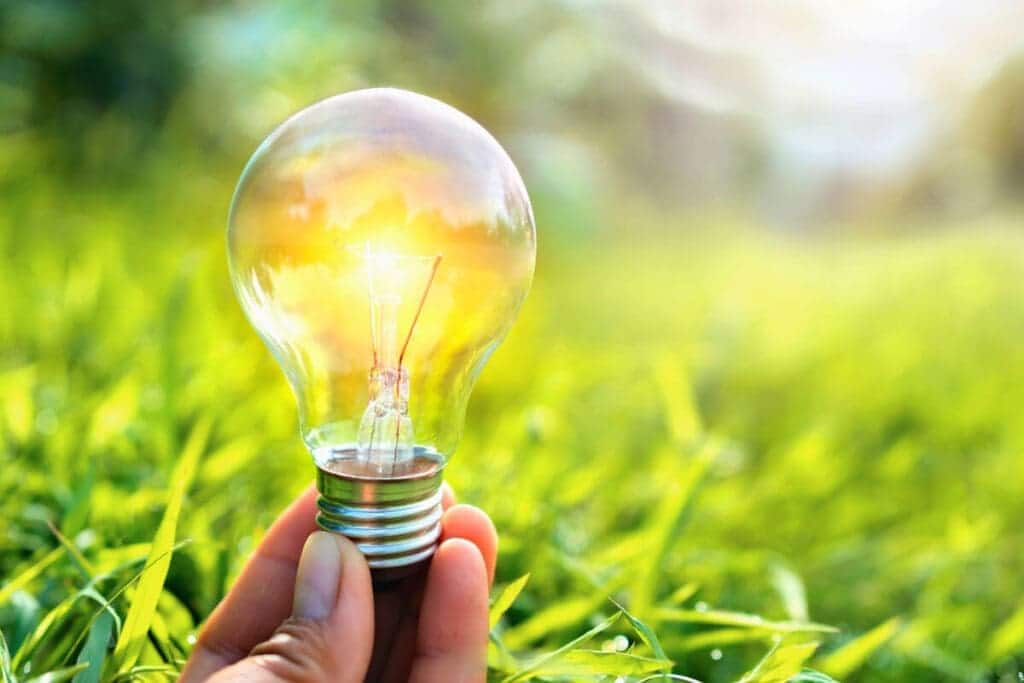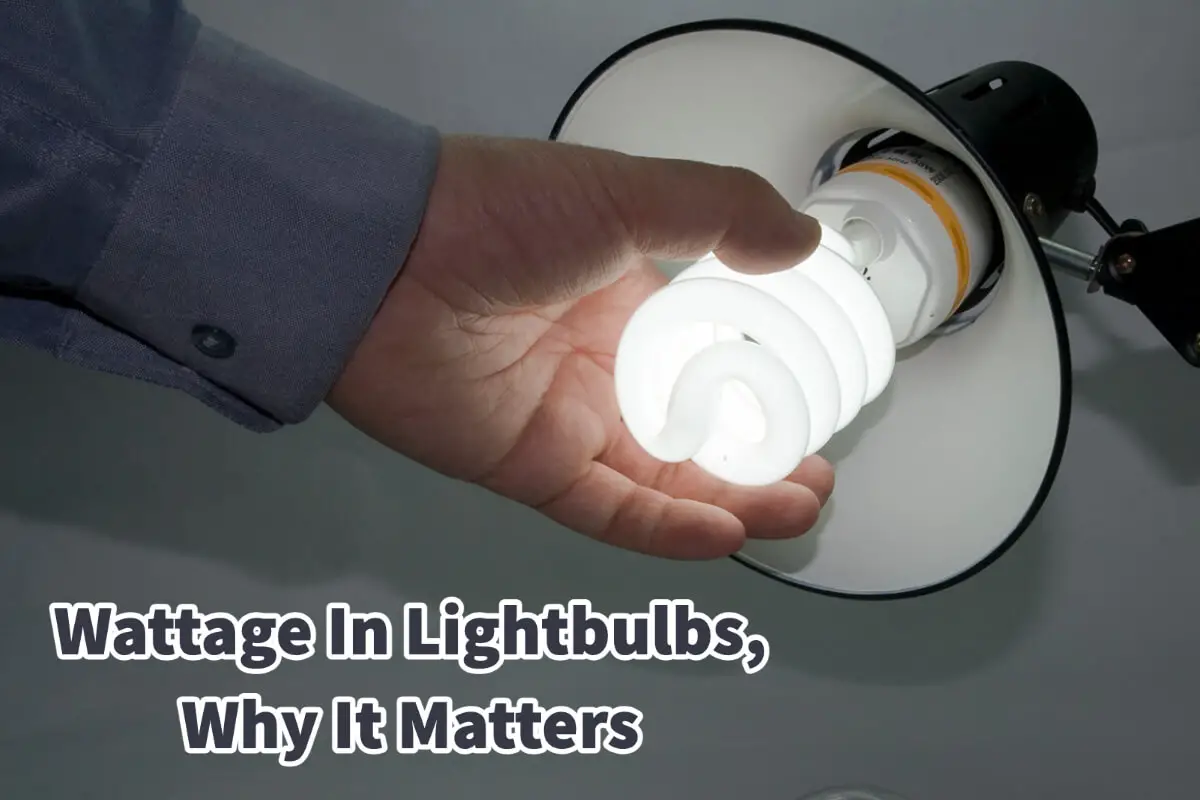In our quest for efficient energy consumption, one cannot understate the importance of understanding wattage in lightbulbs and why it matters. As we illuminate our homes, streets, and offices, the choice of the lightbulb and its wattage can significantly impact our energy bills, environmental footprint, and even the aesthetic appeal of our spaces.
A watt is a unit of power, a quantitative measure that translates into the energy consumed by a device, in this case, a lightbulb. It’s easy to overlook the significance of wattage, especially when our focus seems to gravitate toward the intensity or color of the light emitted. Read on as we explore the concept of wattage in lightbulbs, why it matters, and how understanding it can lead to more informed and beneficial choices in our daily lives.
Table of Contents
- What Is The Wattage In A Lightbulb?
- What’s All The Fuss About LED Lights?
- Lightbulb Wattage And The Environment
- Related Content
What Is The Wattage In A Lightbulb?
A watt, the standard power unit, quantifies a device’s energy, such as a lightbulb. Its significance can often be overshadowed when we primarily concentrate on aspects like the brightness or hue of the light produced.

But when we consider that a bulb’s wattage affects not only its energy consumption but also its brightness and lifespan, we start to appreciate why wattage should be an essential consideration in our choice of lighting.
Traditional incandescent bulbs, for instance, consume much more energy – represented in higher wattage – for the same amount of light as their more modern counterparts, the CFLs (Compact Fluorescent Lamps) and LEDs (Light Emitting Diodes).
In an era where sustainability and efficiency are paramount, comprehending wattage becomes critical.
Armed with this knowledge, we can make smarter decisions about the type of lightbulbs we use in our homes and workplaces, paving the way for a brighter, more sustainable future. Let’s step into the enlightening world of lightbulb wattage and understand why ‘watts’ matter.
What’s All The Fuss About LED Lights?
In recent years, the shift has been made towards LED (Light Emitting Diode) bulbs, and with good reason. LEDs have revolutionized the lighting industry regarding energy efficiency, lifespan, and versatility.
They work differently from traditional incandescent bulbs, not relying on heated filaments to produce light. Instead, they produce light through the movement of electrons in a semiconductor material. This process results in less energy wasted as heat, making them significantly more efficient than their incandescent counterparts.
LED bulbs offer several advantages over other types of light bulbs. They are more efficient in converting electricity to light, typically using 80-90% less energy than incandescent bulbs.
The savings on your energy bill can be substantial over the bulb’s lifetime, especially if you have many light fixtures.
In addition, LEDs can last 15-25 times longer than incandescent bulbs and three times longer than CFLs. While they may cost more upfront, their longevity means you won’t have to replace them nearly as often, saving you money in the long run.
Another important aspect is their versatility. LEDs can be designed to emit different shades of white light, from cool white that mimics daylight to warm white, similar to incandescent light. The ability to choose the color temperature can significantly impact the mood and functionality of a room.
The transition to LED lighting is a fundamental shift in how we think about and use light. The focus is no longer on wattage as an indicator of brightness but on lumens and lighting quality.
Lightbulb Wattage And The Environment
Apart from the financial aspects of energy usage, an environmental perspective must be considered when discussing wattage in light bulbs. Higher-wattage bulbs require more energy to produce the same light as lower-wattage, more efficient bulbs. This extra energy often comes from burning fossil fuels, contributing to climate change.

According to the U.S. Energy Information Administration, about 20% of the total energy consumption in the U.S. is used for lighting. Using energy-efficient bulbs like LEDs can significantly reduce our carbon footprint and help mitigate the effects of climate change.
Energy efficiency is more critical than ever. While changing a light bulb may seem small, the cumulative effect can be substantial when millions switch.
To put it in perspective, if every American home replaced just one incandescent light bulb with an LED bulb, we could save enough energy to light over 3 million homes for a year, save about $700 million in annual energy costs, and prevent 9 billion pounds of greenhouse gas emissions per year, equivalent to the emissions from 800,000 cars.
Wattage in light bulbs matters in many ways. From influencing your energy bill to significantly impacting the environment, the importance of wattage should not be understated.
The transition to energy-efficient lighting like LED bulbs represents an opportunity to conserve energy, save money, and contribute to a more sustainable future. It’s crucial to be aware and informed about these issues and to make conscious choices that will positively impact your wallet and the world.
Understanding and correctly interpreting light bulb labels is the first step toward this goal. While it may seem a little overwhelming initially, the benefits are worth the effort. It’s time we started thinking in lumens, not watts, and realized that when it comes to light bulbs, less can be more.
If you want to see how Mondoro can help you with your Ul Certified lamp needs, we would love to talk to you about how we can help you.
Find out more about how Mondoro can help you create, develop, and manufacture excellent home decor and furniture products – don’t hesitate to contact me, Anita. Check out my email by clicking here or become a part of our community and join our newsletter by clicking here.
Mondoro gives out a FREE Lookbook to anyone interested. You can receive a copy of our latest Lookbook by clicking here.
Listen to our Podcast called Global Trade Gal. You can find it on all major podcast platforms. Try out listening to one of our podcasts by clicking here.
Subscribe to our Mondoro Company Limited YouTube Channel with great videos and information by clicking here.
Related Content
What Is The Difference Between LED, CFL, And Incandescent Light Bulbs?
There can be some confusion about the difference between an LED or incandescent bulb and which light bulb is the most energy-efficient.
You can discover more by reading What Is The Difference Between LED, CFL, and Incandescent Light Bulbs? by clicking here.
What Are The Standard Light Bulb Base Socket Types And Sizes?
It can get confusing when considering different light bulb socket bases. Many people get confused about the other numbers used for each light bulb base and their meanings.
You can discover more by reading our blog, What are the Standard Light Bulb Base Socket Types and Sizes? by clicking here.
Meaning Of The Incandescent Wattage Sticker On Your Lamp Socket
The incandescent warning sticker on your lamp socket helps inform consumers what wattage lightbulb they can safely use for their lamp. The sticker also indicates that the lamp has been tested up to the UL or ETL standard for the amount of wattage listed.
You can discover more by reading our blog Meaning Of The Incandescent Wattage Sticker On Your Lamp Socket by clicking here.


